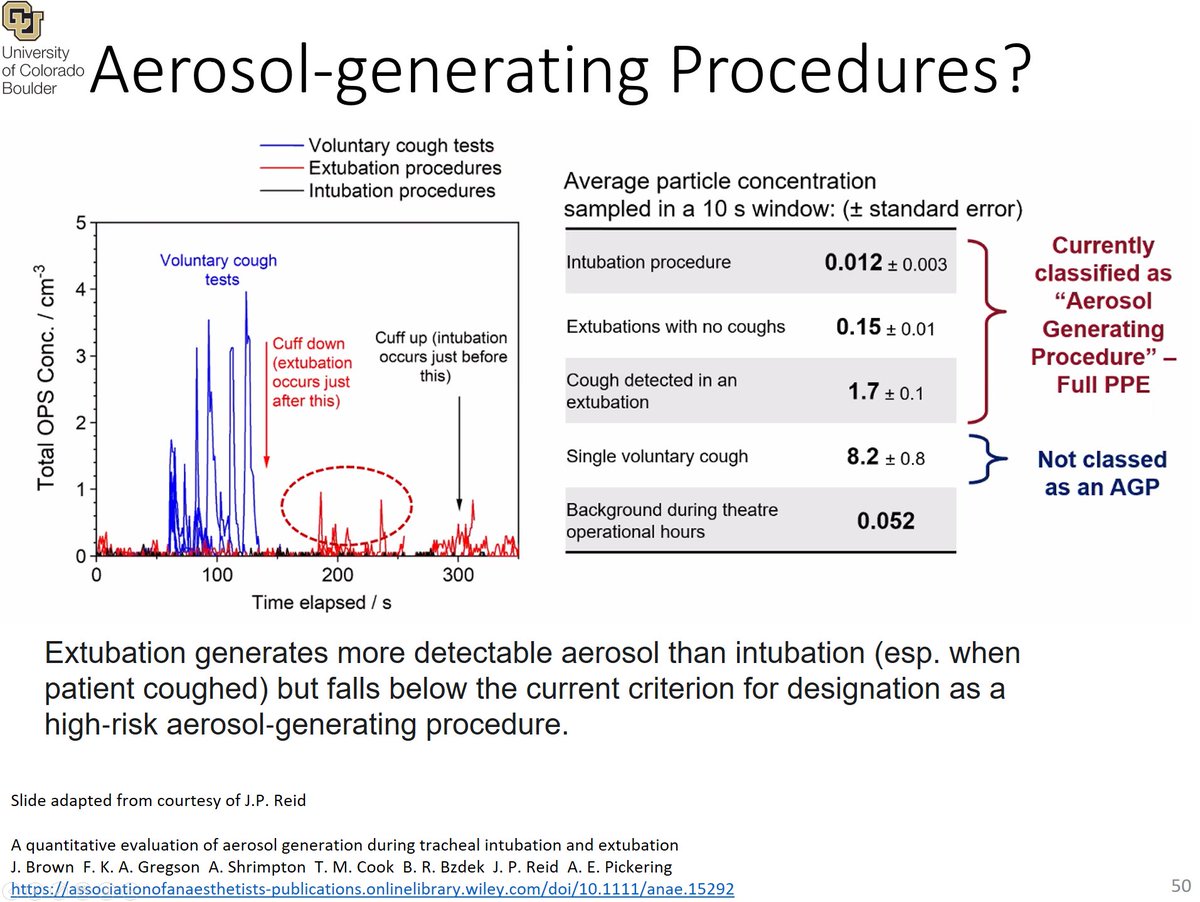
1/ The Australian "Nebulizer-gate" maybe a red herring to distract from the fact that airborne transmission of COVID-19 happens all the time
I've been following this story, which didn't make a lot of sense to me:
bloomberg.com/news/articles/…
I've been following this story, which didn't make a lot of sense to me:
bloomberg.com/news/articles/…
2/ A nebulizer is a device that produces aerosols containing a medicine, that are breathed in by a patient. See e.g. this video:
3/ If those aerosols contact the respiratory tract of the person, they will stick there. There is no physical way for the virus on the lining of the respiratory tract to "jump" onto the medicine containing aerosols.
4/ This UK reports says as much:
"during nebulisation, the aerosol derives from a non-patient source (the fluid in the nebuliser chamber) and does not carry patient-derived viral particles. If a particle in the aerosol coalesces with a contaminated mucous membrane...
"during nebulisation, the aerosol derives from a non-patient source (the fluid in the nebuliser chamber) and does not carry patient-derived viral particles. If a particle in the aerosol coalesces with a contaminated mucous membrane...
5/ ... it will cease to be airborne and therefore will not be part of an aerosol."
assets.publishing.service.gov.uk/government/upl…
assets.publishing.service.gov.uk/government/upl…
6/ If the person is infected, they may also exhale respiratory aerosols that contain the virus. ALL THE TIME, not just when using the nebulizer.
Perhaps the nebulizer might increase the emission of virus-containing aerosols? (Is there any evidence for this? If so pls link here)
Perhaps the nebulizer might increase the emission of virus-containing aerosols? (Is there any evidence for this? If so pls link here)
7/ Most likely explanation IMHO: Australian health authorities do not want to accept the evidence (obvious in this case and in many other cases, such as the Skagit choir outbreak that we investigated, see thread) that COVID is airborne all the time.
https://twitter.com/jljcolorado/status/1306450428867964930
8/ They try to distract from fact that #COVIDisAirborne all the time, by implying this was a very unusual "aerosol-generating procedure (AGP)"
@WHO has mentioned AGPs. Trouble being that actually many of those AGPs don't seem to generate much aerosol:
…-publications.onlinelibrary.wiley.com/doi/10.1111/an…
@WHO has mentioned AGPs. Trouble being that actually many of those AGPs don't seem to generate much aerosol:
…-publications.onlinelibrary.wiley.com/doi/10.1111/an…

9/ But this is not the only airborne case in quarantine hotels. And New Zealand is less afraid to admit that those hotel cases are most likely airborne transmission:
https://twitter.com/DamianTheAussie/status/1356040350075240448
10/ We know from other diseases that it is almost impossible to unequivocally prove airborne transmission until isolated cases happen in complete absence of community transmission.
11/ E.g. smallpox airborne transmission was disputed for centuries, and was only finally proven in 1971.
An outbreak occurred in a hospital in Germany in complete absence of community transmission, and the only possible explanation was airborne trans.
academic.oup.com/aje/article-ab…
An outbreak occurred in a hospital in Germany in complete absence of community transmission, and the only possible explanation was airborne trans.
academic.oup.com/aje/article-ab…
12/ These hotel outbreaks seem like the canary in the coal mine for airborne transmission of COVID-19. New Zealand seems to be learning from them. Australia seems bent on denial
Australia's ICEG seems to have some stunningly recalcitrant aerosol deniers:
Australia's ICEG seems to have some stunningly recalcitrant aerosol deniers:
https://twitter.com/jljcolorado/status/1358071353186922497
13/ If people have technical information that complements or contradicts what I am saying, please send it my way. But I have seen this pattern of denial before in other places (hint: @WHO and many governments), so I thought it was important to point out this possibility.
14/ Although I had not seen @kprather88's tweet when I wrote my thread, it seems that I am not the only aerosol expert to share this view. (Kim is member of BOTH the US National Academy of Sciences and National Academy of Engineering - highly respected)
https://twitter.com/kprather88/status/1361013677462233089
15/ And yet another thread explaining it more clearly than I did:
https://twitter.com/caruzycki/status/1361101273483763713
16/ An another prominent aerosol scientist (Editor of a major scientific journal), familiar with nebulizers, saying the same thing:
https://twitter.com/vfmcneill/status/1361025208816181250
• • •
Missing some Tweet in this thread? You can try to
force a refresh


